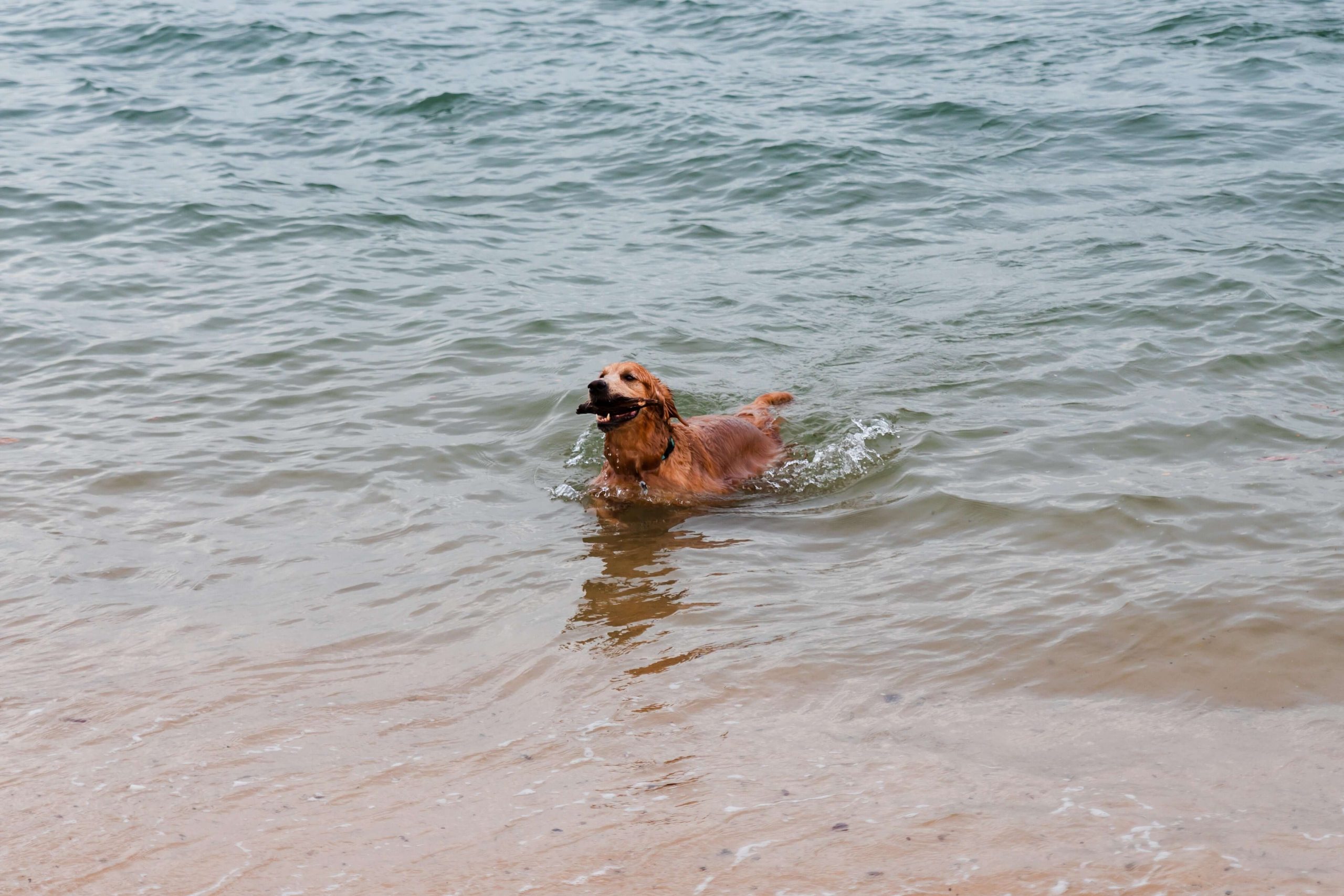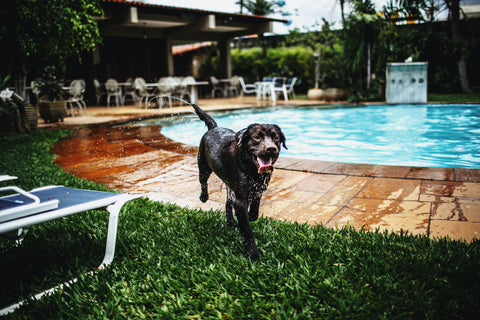
11 tips to keep your dog swimming safely
December 10th 2020
Safe Swimming
Teaching your dog how to swim is a crucial stage of a dogs life. Some dogs will walk around puddles, others like to dive into any water and start swimming. We’ve put together a few tips to help your dog enjoy water safely.
–
First of all, not all dogs are good swimmers. Some breeds were born to do it, like the Newfoundlands that work as lifeguards but for other dogs they would rather keep all four feet on dry land, so it’s important to never force your dog in to water but allow them to enjoy it in their way.
–
Always check the current or tide strength before letting your dog go into the water.
Pick a shallow spot for paddling.
When paddling in a river make sure the banks aren’t too steep, so your dog can easily climb out.
Try to avoid swimming when the weather is cold. If your dog gets too cold, he may struggle to climb out of the water and could suffer from hypothermia.
Don’t use river water or the ocean as hydrotherapy for arthritic dogs. The water needs to be very warm for the muscles to work properly and the swimming needs to be carefully controlled. An indoor hydrotherapy pool or water treadmill, with a qualified and experienced hydrotherapist is the best option here.
If your dog is just learning to swim, use a doggy life jacket and keep him or her on a long lead, ideally attached to a harness/the life jacket so you don’t strangle your dog if you need to help them out the water. Or take advantage of your local hydrotherapy centre who may offer ‘puppy swims’ in a safe environment.
Before letting them leap into rivers or lakes, check what’s at the bottom. Sharp stones, shopping trolleys or branches may be submerged dangers.
Rinse your dog off after he has been in the water, to remove anything he or she might lick off.
Don’t let them swim where there is blue-green algae present (see below)
Keep swimming sessions short and try to avoid them from swallowing too much water (see below).
If you’re at the beach, take plenty of fresh drinking water with you. If your dog tries to drink salt water or takes in too much when swimming it can be fatal (see below).
Is it safe for a dog to swim?
Yes it is! However there are a couple of things to look out for:
–
Avoid blue-green algae
There is a risk to both humans and animals across the UK from the toxins blue-green algae produce. Algae is more prevalent in the summer as the temperatures increase and the water flow drops and becomes slower moving.
–
The blue-green algae are not actually an algae but clumps of bacteria called cyanobacteria. The bacteria produce toxins (cyantoxins) which can affect your dog (and you) if the water is drunk or bathed in.
–
Not all of the algal blooms produce toxins and not all of them produce the same type of toxins but if your dog is unlucky enough to encounter the most dangerous types (neurotoxins and hepatoxins) it can result in damage to the nervous system, liver failure and death.
–
What to look out for
Signs that your dog has been poisoned with cyantoxins include vomiting, diarrhoea, blood in the stools, seizures, drooling, weakness, disorientation, breathing difficulties and coma.
–
If your dog jumps into blue-green algae you should contact your vet immediately as there is no antidote and immediate supportive veterinary treatment is crucial.
–
Water Intoxication
Water intoxication, known as hyponatremia, can occur when a dog swallows excessive amounts of water. It is quite rare but can be fatal when it occurs. Sadly, it is usually a result of dogs taking in too much water when they are either diving in and out of water for a long period of time or fetching things from the water. Swallowing large amounts of water when playing with garden sprinklers or hose pipes can also be a problem.
–
The large amount of water causes the body to be ‘washed out’ of its natural salt reserves of sodium. Sodium is an important electrolyte that helps to control the amount of water in and around the body’s cells.
–
It maintains blood pressure, nerve and muscle function. If the sodium level drops too low, it causes the cells to swell up with water as the body tries to rebalance itself. If the cells in the brain start to swell it can cause severe problems.
–
Signs of water intoxication
Signs include bloating, vomiting, excessive salivation, glazed eyes, loss of coordination and pale gums. If the condition is severe then the dog may start to show difficulty breathing, seizures, collapse, coma and very sadly death.
If you think your pet has drunk too much and is showing any of the initial symptoms, it is essential you visit your vet immediately.
–
This condition can progress rapidly, and medical intervention is crucial for recovery. Treatment includes intravenous administration (where the medicines are put straight into a vein) of drugs to reduce brain swelling, diuretics to help the body remove water (pee more) and electrolytes.
–
Saltwater poisoning
With water intoxication the sodium levels in the body drop too low, however when your dog drinks salt water the sodium levels can become too high. Sodium, water and other salts in the body are in a very delicate balance and if this balance swings too far either way it can cause problems. If you go to the beach, always take fresh water for your dog to drink and try to limit the time in the sea in case they swallow too much.
–
Signs of saltwater poisoning
The signs of saltwater poisoning are quite similar to that of water intoxication but includes excessive thirst and urination too. Look out for vomiting, diarrhoea, wobbly walking, lethargy, inappetence, seizures and coma. If not treated in time this will sadly result in death. Treatment includes supportive care alongside intravenous administration of drugs to reduce brain swelling and dehydration.
–
Don’t forget to have fun!
It might seem like there are a lot of things to remember when taking your dog for a dip, but if you follow these top tips it will allow you and your dog to have fun and enjoy the water.

 Shop Dog
Shop Dog
 Shop Cat
Shop Cat
 Vet Know-how
Vet Know-how Contact
Contact



